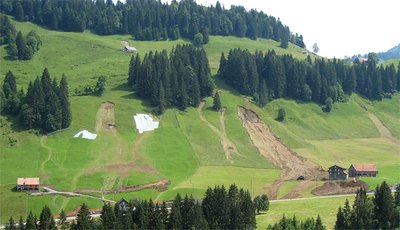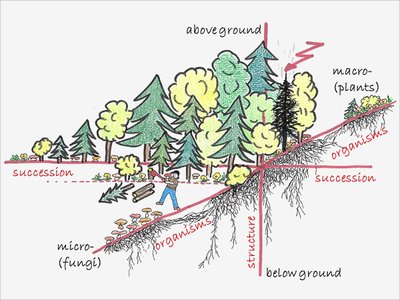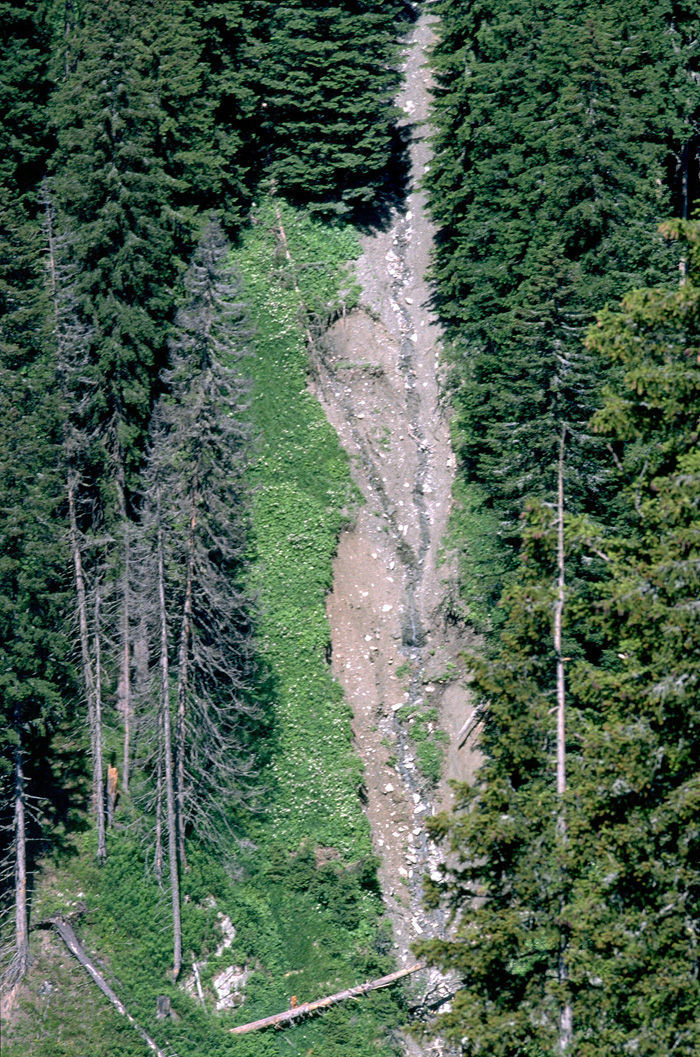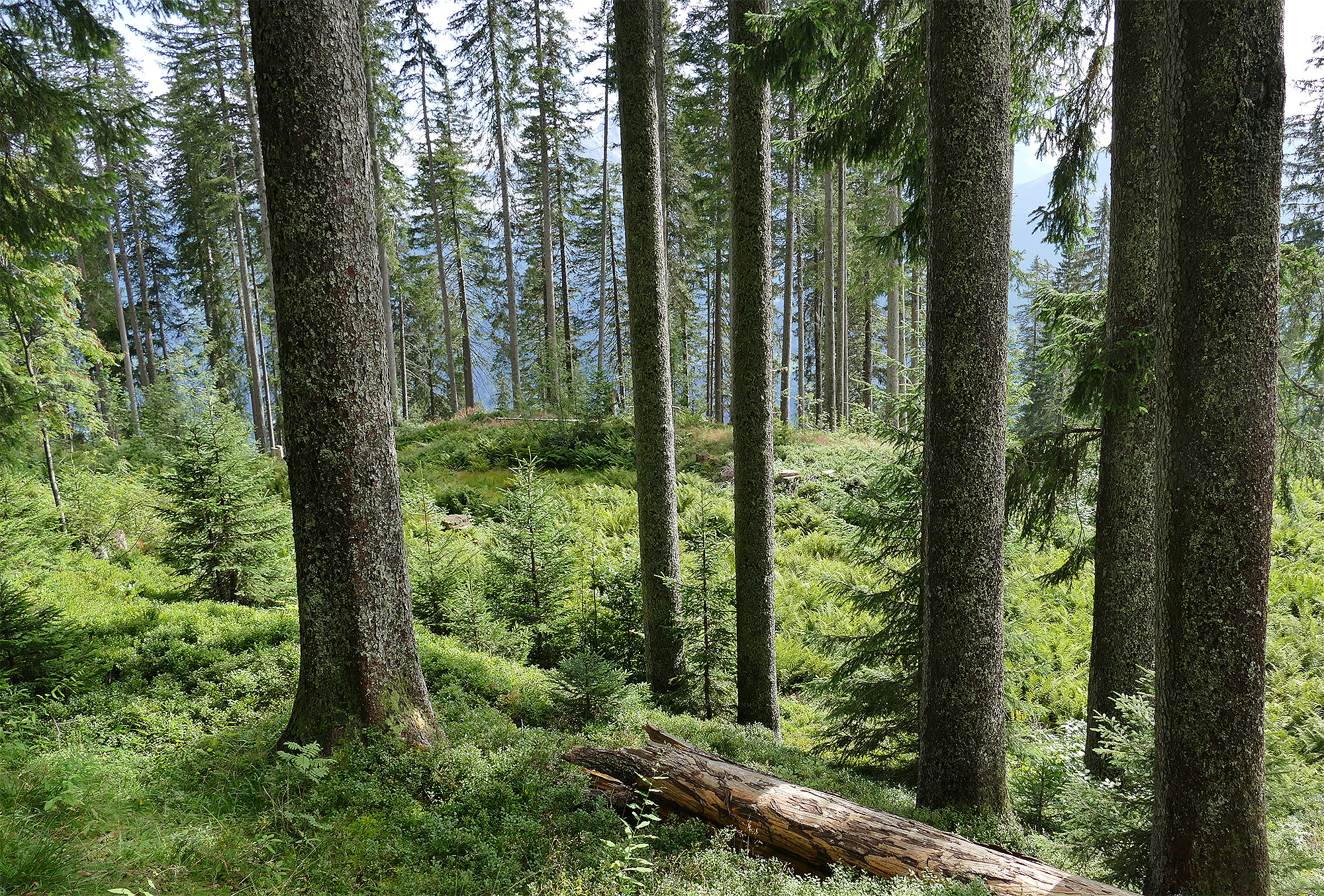
Fig. 1 - Landslides near Oberiberg in canton Schwyz, after the severe thunderstorm on 20th June 2007. Photo: Christian Rickli (WSL)

Fig. 2 - The presence of diverse species and structures above and below ground increases soil stability. A third factor that warrants consideration is succession and the diversity that arises through various development stages. Drawing: V. Graf-Morgen, 2016
Erosion and superficial landslides endanger human lives, buildings and transportation routes. In the last 20 years individual incidents in Switzerland have caused damage of up to 100 million francs and even claimed lives. Given that climate change is likely to make extreme weather outbursts more frequent, moreover, a growing number of superficial landslides are to be expected as well.
In a project conducted within the framework of the National Research Programme Sustainable Use of Soil as a Resource, which is being implemented by the Swiss National Science Foundation (SNSF), a research team of the Swiss Federal Institute WSL and the Swiss Federal Institute of Technology ETH have therefore been investigating how vegetation, and forested areas in particular, influence slope stability. The scientists were seeking to establish how landslides can be more accurately forecast and possibly prevented by simple and inexpensive means.
The researchers focused on biological resources, namely plants and root fungi (mycorrhizae), because both play an instrumental role in stabilising soil. For the purposes of the study they consulted a database containing detailed records of more than seven hundred landslides. Apart from evaluating these data, they conducted their own experiments both in the field and in the lab. They compared various forest structures and used a purpose-built shear test apparatus to determine the forces required to trigger sliding of soil with and without vegetation.
The research team was thus able to develop a new concept based on soil mechanics, the stabilising effect of plants, strategies of forest management, and land use. They can now use a simple technique to explain slides that occur in forested areas and describe the characteristics of vegetation required to offer the best protection against superficial landslides.
Mycorrhizae enhance slope stability

Fig. 3 - Forest gaps that are more than twenty metres long in the line of slope are a critical case. Photo: Ulrich Wasem (WSL)
Forests containing a wealth of species, a diverse root structure and trees of various heights and ages are especially effective in increasing soil stability. The study also showed that slopes with ideal vegetative cover and root mass can remain stable up to 5° steeper than bare slopes. Forest gaps that are more than twenty metres long in the line of slope, in contrast, are a critical case. Mycorrhizal fungi, which live in a symbiotic relationship with plants and trees, can improve the stabilising effect of the vegetation. Ideally, they are to be used in afforestation and planting schemes.
Forest management – an effective protective measure
Based on the 100-year severe thunderstorm in Sachseln in 1997, the researchers compared the estimated cost of forest management seeking to achieve the best possible protection against superficial slides with the actual cost of the damage caused by the event – around 120 million francs. They reached the conclusion that investing an amount equivalent to 10 to 25 percent of this loss in good management could maintain the forest for one hundred years without it suffering any major damage.
The results are summarised for practitioners in a report. It also contains detailed descriptions of the experiments, calculations, and specific recommendations on forest management and land use. The report is expected to help foresters and other experts and interested parties to plan appropriate biological engineering and silvicultural measures.


